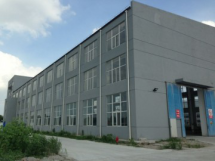Product Content
Category
Construction Materials-Other Building Materials
Acrylic material,
with a crystal-like texture,
glistening and transparent,
good plasticity,
can be processed using different techniques,
creating various decorative effects,
especially colorless and transparent acrylic, which is a typical material in diamond pastes.
Acrylic diamond paste production
mainly relies on engraving or cutting.
Using engraving machines has completely replaced traditional sawing techniques.
It can create
cut three-dimensional characters, deeply engraved graphics and text, layered reliefs, image engravings, three-dimensional sculptures, and other effects.
Cutting "crystal"
or engraving and relief graphics are commonly used techniques in acrylic processing for diamond pastes. The cutting surface requires no melting lumps, no knife marks, and no cracks; small cutting tools are recommended.
There are various specifications and shapes of small tools,
which should be selected according to the thickness of the sheet,
the depth of processing, and the desired effect.
The specifications and performance of the tools are detailed in the table.
Cutting tool specifications and performance
Tool name | Purpose | Specifications | Characteristics | Effects
Single-edged thread groove cutting tool
Specifically designed for cutting acrylic,
with a smooth cutting surface,
curved segments without jagged marks.
Double-edged glass cutter
Specifically for acrylic cutting,
with a frosted cutting surface.
Double-edged flat end mill
Specifically for milling flat-bottomed graphics and text,
with a certain level of transparency on the milled surface.
Ball end and conical end mills
Used for relief text and patterns,
providing a transparent feel on the surface.
Single-edged conical cutter
Used for engraving two-color plates,
with clear text and a smooth bottom surface.
II. Engraving Equipment
Engraving equipment has become mainstream in diamond paste processing. There are various products of engraving equipment, with different processing methods, materials, and effects. Depending on the processing method, there are pressure jet engraving, laser engraving, and mechanical engraving.
1. Pressure jet engraving
Utilizes compressed air,
introduces a special medium,
and uses high-pressure airflow to shoot sand particles at high acceleration,
causing the particles to collide with the workpiece being engraved. The energy generated destroys the molecular bonding forces on the surface of the workpiece, forming engraving marks. This is often referred to as sandblasting. Sandblasting requires a pre-made mask.
Generally used for large area patterns on hard materials,
it performs poorly for small text,
and is now rarely used.
2. Laser engraving
Utilizes specific media to generate high-energy beams and controls the beams. When the beam shines on a specific point on the object's surface, that point vaporizes rapidly due to high temperature,
achieving engraving and cutting purposes.
Laser cutting is a non-contact processing method,
suitable for a wide range of materials, including acrylic, crystal, quartz, glass, metal, wood, marble, rubber, etc., for graphic and text engraving.
Currently, laser engraving is widely used in the diamond paste industry as a flat engraving device. There are many brands of laser engraving machines, such as the American Hamar, Sitong series, and Jiacheng.
For diamond paste processing, it is preferable to have larger working dimensions, allowing multiple repeating workpieces to be grouped and processed at once, thus improving efficiency.
The laser engraving process is similar to that of an inkjet printer. It scans line by line horizontally,
with longitudinal and lateral feed completed by the laser frame,
allowing observation of the processing status through a window.
The engraving depth of laser graphics has certain limitations,
but it can meet the requirements for flat diamond paste engraving.
On the surface of engraved graphics, various colors can be embedded using a squeegee, creating different graphic colors quickly.
3. Mechanical engraving
Utilizes computer-controlled high-speed rotating tools to cut the surface of the object, obtaining text,
graphics, or geometric shapes.
Its processing feature is that various engraving effects can be achieved by changing the shape of the tool and the software control method.
Suitable for diamond paste processing,
there are many varieties of engraving machines commonly used, including American Chisel King, French Jabot, Taiwanese Pika, as well as Beijing Jingdiao, Nanjing Weike, Shanghai Haitai, and Woodpecker.
All engraving equipment is computer-controlled, known as computer numerical control (CNC) engraving systems.





 Whats App
Whats App
 PlastMatch App
Scan the QR code
PlastMatch App
Scan the QR code 